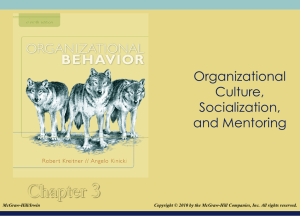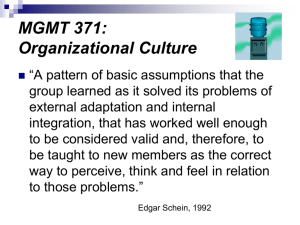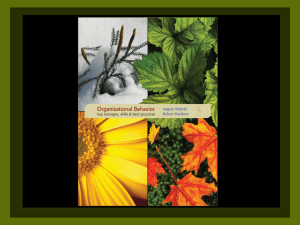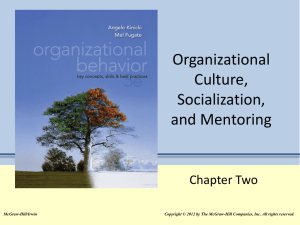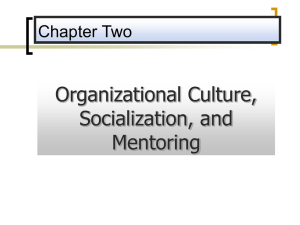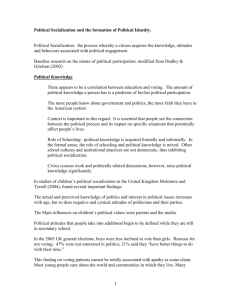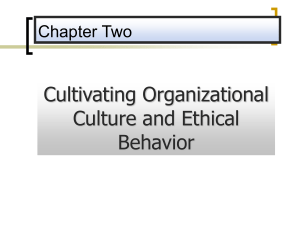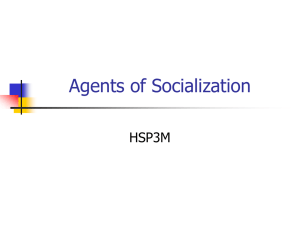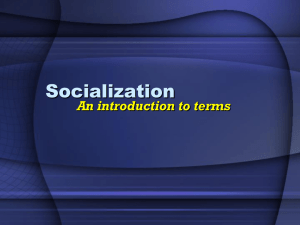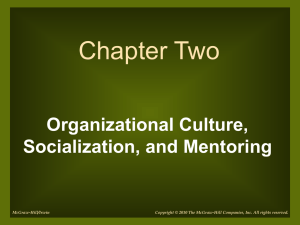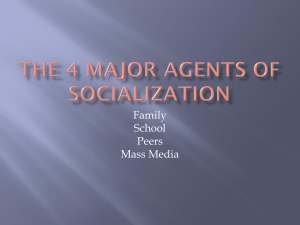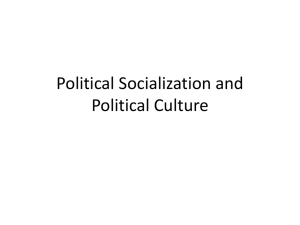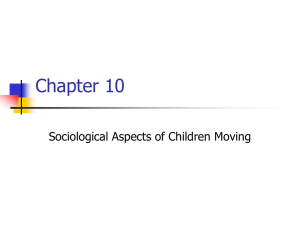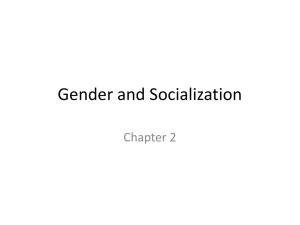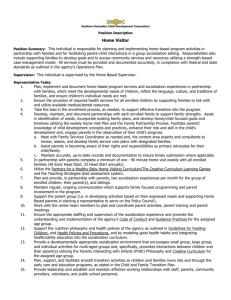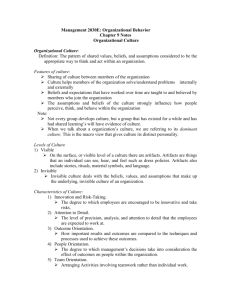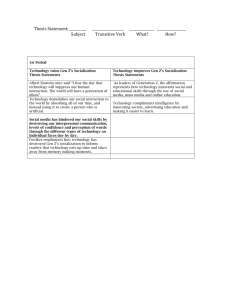Chapter 3
advertisement
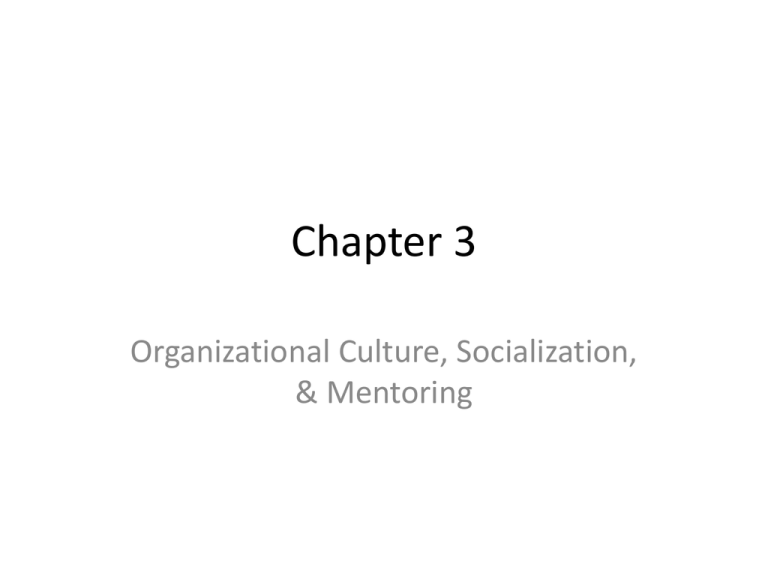
Chapter 3 Organizational Culture, Socialization, & Mentoring Organizational Culture • A set of values, beliefs, & assumptions shared by members of an organization • Culture influences employee attitudes & behavior • Culture can be a source of sustainable competitive advantage • Managers can influence (but not control) culture Where does culture come from? • • • • Founder’s values Industry dynamics National culture Attraction – Selection – Attrition cycle Understanding Organizational Culture Antecedents Organizational Culture • Founder’s values • Industry & business environment • National culture • Senior leaders’ vision and behavior • Observable artifacts • Espoused values Organizational Structure & Practices • Reward systems • Organizational design • Socialization • Mentoring • Decision making • Group dynamics • Communication • Basic assumptions Organizational Outcomes Group & Social Processes Collective Attitudes & Behavior • Work attitudes • Effectiveness • Job satisfaction • Innovation & stress • Motivation • Influence & empowerment • Leadership Layers of Organizational Culture • Observable Artifacts – Physical manifestation of values: • • • • Acronyms Manner of dress Stories Rituals, etc. Cultural Artifact Layers of Culture (continued) • Espoused Values: explicitly stated set of preferred values – Concepts or beliefs – Pertain to desirable end-states or behaviors – Transcend situations – Guide the behaviors and decision-making – Ordered by relative importance • Enacted values: values that actually exist Layers of Culture (continued) • Basic Assumptions – Unobservable underlying assumptions – Taken for granted – not explicitly stated or analyzed – People may not be conscious of them – Resistant to change – Inconsistent behavior is hard to imagine Four Functions of Organizational Culture 3-9 Four Functions of Org. Culture • Organizational Identity – Establishes the company’s business philosophy – Ideally, employees will share the values • Facilitate Collective Commitment – Everyone knows what’s really important – Peer pressure • Social System Stability – Helps you know what to expect from others • Sensemaking – Helps individuals make sense of novel situations Competing Values Framework 3-11 Opposing/Competing Values • One company can have aspects of all four CVF culture types • The CVF culture types compete or contradict each other – Create paradoxes • Too much (too little) of any one culture type can create weaknesses • Managing the paradoxes is the key Changing Culture • Changing people’s minds & values • Can target artifacts, values, or assumptions • Must be aligned with vision & strategic plan – “Culture eats strategy for breakfast. You can have the best plan in the world, and if the culture isn’t going to let it happen, it’s going to die on the vine” • Mark Fields, President, The Americas, Ford Motor Co. Culture Change Mechanisms • • • • • • • • • Formal statements Design of physical work space Slogans Training Rewards Stories Measurement & Control Leader reactions to crisis Organizational Structure Organizational Socialization • Process by which new employees learn an organization’s culture • Three-Phase Model of Organizational Socialization Phase I: Anticipatory Socialization • Occurs before you join the company • Perceptions about different companies or different industries • Unrealistic expectations are a danger – Realistic Job Preview (RJP) • RJP is related to lower expectations, higher performance, and less turnover. Phase II: Encounter • Once you start the new job • Orientation programs • Training – Org. policies & procedures – Norms, values, culture, expectations Phase III: Change & Acquisition • New employee masters their new job • Requires a good understanding of expectations • Confidence Mentoring • A good tool to ingrain the culture in new employees • Gives new employees a social connection to the organization • What mentors do: – Coach, give exposure, protect, get challenging assignments, role model Developing Networks • Diversity of development relationships – The number of different people that you’re networked with – The various social systems from which the relationships come • i.e., work, school, family, etc. • Developmental relationship strength – The quality of those relationships Developmental Networks Associated with Mentoring Developmental Relationship Strength Developmental Relationship Diversity Weak Ties Strong Ties • D2 Low Range • D2 Key: D1 • D1 • •P •P D = developer P = protege Receptive D1 • High Range Traditional • D2 D1 • • P D3 • • P • D4 Opportunistic • D2 D3 • • D4 Entrepreneurial 3-22 Importance of Social Networks • Mentored employees have: – Higher pay, more promotions, more organizational knowledge, better job performance, more skilled • People with the broadest digital networks were 7% more productive than those without such networks
